#golden age hong kong
Text
Translation of Anita Mui's 1991 "似是故人来" (It Seems an Old Friend has Returned)
My first sapphic translation! Anita Mui, the Madonna of Hong Kong, has a very special place in my heart. She sang many Golden Age anthems, starred in just as many Golden Age dramas, and was named the "big sister of HK's music industry." Though she never disclosed her sexuality, she was named a queer icon for her androgyny, sexually explicit lyrics, and performance of genderqueer roles. (Think Lady Gaga.)
似是故人来 is the theme song of the 1991 双镯, or "The Two Bracelets," a lesbian love story set in the countryside of southern China. The movie was adapted from the novel of the same name by Lu Zhaohuan, and was directed by Huang Yushan. 似是故人来 was composed and produced by Luo Dayou, with lyrics by Lin Xi, both of whom operated under strict censorship and limited knowledge of the film's plot. According to Luo, Anita Mui was 2.5 hours late to the recording session (which I think is kinda gay), but finished the recording in 30 minutes.
Translation:
同是过路 同做过梦
We walked the same roads towards the same dreams.
本应是一对
We were supposed to be a couple.
人在少年 梦中不觉
I was too young, I didn’t know I was dreaming.
醒后要归去
Now I’ve awakened, and I wish to return.
三餐一宿 也共一双
Three meals, one house, the two of us together.
到底会是谁
Who will you be in my future? (1)
但凡未得到 但凡是过去
I don’t think you’ll ever understand. It’s in the past, after all.
总是最登对
But I’ve always loved you. (2)
台下你望 台上我做
You’ll watch me from the audience, I’ll perform for you onstage.
你想做的戏
I’ll give you whichever story you wish. (3)
前事故人 忘忧的你
Old friend, you who forget your sorrows,
可曾记得起
Do you ever remember me? (4)
欢喜伤悲 老病生死
Joys and sorrows, life and death:
说不上传奇
What are those stories next to ours? (5)
恨台上卿卿 或台下我
I hate those lovers onstage, and I hate myself offstage. (6)
我不是我跟你
I hate that I am not with you. (7)
俗尘渺渺 天意茫茫
This land is so barren. Heaven knows no shame (8)
将你共我分开
To separate you from me.
断肠字点点 风雨声连连
My broken heart beats in my every word. This storm will never end.
似是故人来
Old friend, I thought you were coming back. (9)
何日再在 何地再聚
When will we be here again? Where shall we meet again?
说今夜真暖
This evening was so warm.
无份有缘 回忆不断
We don’t share a destiny, but I’ve never stopped thinking of you. (10)
生命却苦短
This life is so short.
一种相思 两段苦恋
One lovesickness, two bitter hearts.
半生说没完
I’ve spent half a life spent describing you to others. (11)
在年月深渊 望明月远远
Each year is an abyss, I wish upon the moon.
想像你忧怨
And I remember all your sorrows.
俗尘渺渺 天意茫茫
This land is so barren. Heaven knows no shame
将你共我分开
To separate you from me.
断肠字点点 风雨声连连
My broken heart beats in my every word. This storm will never end.
似是故人来
Old friend, I thought you were coming back.
留下你或 留下我在
Did I leave you behind? Or did you leave me behind,
世间上终老
To grow old in this world? (12)
离别以前 未知相对
Before we parted, did we know how much we loved each other?
当日那么好
Those days were so lovely.
执子之手 却又分手
I hold your hand, just to let it go again.
爱得有还无
I don’t know where to find our love. (13)
十年后双双 万年后对对
In ten years, we’ll be together. In ten-thousand years, we’ll be together.
只恨看不到
I only wish I could see it happen.
十年后双双 万年后对对
In ten years, we’ll be together. In ten-thousand years, we’ll be together.
只恨看不到
I only wish I could see it happen.
Translation notes:
(1) 到底会是谁 translates directly to "Who will it be, really?" When placed in conversation with the previous line, this line could mean, "Who will be my partner?" (referring to a love interest the speaker does not yet know/recognize) or "Who will you be?" (referring to the speaker's uncertainty towards their current love interest, and how their love interest seems foreign to them now). The lack of subjects, objects, and pronouns leaves a lot of room for interpretation, so I chose the angstier version.
(2) 总是最登对 translates directly to "Always the right one," or "Always correct." I take this to mean that the love interest has always been the right person for the speaker--hence, "I have always loved you."
(3) 你想做的戏 translates directly to "Whichever play you want to see," referring to the previous line concerning the actress/audience interaction. I chose "I'll give you whichever story you wish" because it sounded better (subjective?) and felt congruous to a number of lines besides just the previous, as well as to the song's meta context. This song was part of a broader love story/movie, after all.
(4) 曾 (ceng) implies something ancient: translated literally, the line is "Have you already remembered?" or "I/you/[subject] already remember." Considering how the protagonists of the movie view their queerness as a sorrow that must be forgotten/left behind, I decided to place this line in conversation with the previous, and go with "do you remember me?"
(5) 说不上传奇 translates directly to "They can't be considered legends," which I believe is a line meant to minimize life/death/old age/illness next to the speaker's love. I thought it was a bit awkward to refer to life/death as legends, so I used the term "stories" and added "next to ours" to match the full effect of the line and its relationship to the previous line. I converted this line into a question because a simple sentence in English doesn't quite have the same power as a short sentence/fragment in Cantonese. Questions do, though, because they feel more accusatory.
(6) The 卿 of 卿卿 (qing qing) can be translated any number of ways: "ministers (of the law)", "wives/ladies," or "lovers." There's a certain heterosexual rigidity implied in the word, which I think any English translation loses.
(7) 我不是我跟你 is the line that confused me the most, because it defies both Chinese and English grammar structures. I tried translating it literally at first: "I am not me with you," or "I am without you," or "Without you, I am not me," before deciding to go with the laziest route. Let me know if there's a better translation, please--I'm still confused.
(8) 天意茫茫 translates to "Heaven's will is wild and vast." The original line implies unknowability, but I used a pretty heavy hand in choosing the word "shame" instead. My academic justification is that shame, accusation, and frustration echo throughout this whole song, and my translation pays tribute to that. My honest justification is that I liked the angst.
(9) There is no object in this line--the speaker just says, "I thought an old friend was coming back"/"It's as if an old friend is coming back." But I liked the addition of an object.
(10) 份 (fen) could mean "to share" or "to separate" or "to share by separating" (e.g. splitting food between people). In this case, I thought it would sound strange to write "splitting a destiny."
(11) 半生说没完 translates to "half a life is not enough." The speaker doesn't clarify what they need the time for: whether to spend with their lover, to talk about them, etc. "Describing you to others" was a big creative liberty of mine, but it's also something that feels very sapphic, and emphasizes the speaker's loneliness.
(12) 终老 has the implications of taking care of one's parents when they are old: a duty, and an emotional labor. Growing old alone, without anyone to take care of you, is a very sad thing in Chinese culture.
(13) 爱得有还无 also translates to "I don't know whether this love exists" and "I don't know whether I have this love." But considering the importance of location, and the importance of journeying/coming/going, I chose "where to find."
#anitamui#anitamuitranslation#anita mui#cantopop#cantopoptranslation#cantopop translation#hong kong#golden age hong kong#Spotify#translation
33 notes
·
View notes
Text
johnnie to’s first mainland film, drug war (2012), complements and rebuts the heroic bloodshed films to is a key director of. most heroic bloodshed films, from john woo’s a better tomorrow (1986) to to’s own election (2005), present the criminal underworld as a kind of modern jianghu (or, in the case of election (2005), as a literal descendant of the ming loyalist societies that star in so many wuxia stories), where the only laws that really matter are the laws of loyalty, brotherhood, vengeance, and blood, and where the police exist as an exterior force that has no bearing on the lives of the characters unless one of them has a personal relationship with a cop. in this film, the laws of loyalty, brotherhood, vengeance, and blood have no bearing on the lives of the characters: much like in bloody tie (2006), the main characters are an incurably scummy rat of a drug dealer and the stone-faced cop he is selling his would-be brothers out to, and whom he sells out as it suits him. the film’s fight choreography, such as it is, also reads as a direct denial of the elegant, dynamic “gun fu” fight sequences iconic to heroic bloodshed film. in the gunfights of this film, the sound of the gunshots is much louder and more oppressive, the choreography is kept to a minimum, incapacitation comes quickly but death comes slowly, and the overall effect is one of much more brutality and realism. the police in this film are not only an active but the central presence of this film, acting without disunity or individual characterization, surrounding the gangsters with spies and surveillance. despite lacking the obsession and violence of bloody tie (2006)—indeed, perhaps because it lacks that obsession and violence—the effect is brutal and claustrophobic: to become involved in the criminal underworld is not to live a carefree heroic life; it is to spend a life as a prey animal, and as a rat in a trap. there is never any question in the film about whether the criminals or the state will win. the question is only at what cost the criminals will choose to lose. the film is, of course, somewhat heavy handed in its presentation of a unified relationship between (cops from) all regions of china and in its anti-drug psa elements. these distracting, propagandistic elements felt out of place in a film that otherwise seemed committed to a grounded, realistic portrayal of its eponymous drug war. despite these shortcomings, i found drug war (2012) a very interesting film, and a notable part of johnnie to’s filmography
#there’s a certain flavor to films by directors who made their name in hong kong’s golden age and are now directing for a mainland audience#and i’m still figuring out if i like it#ryddles
5 notes
·
View notes
Note
What do you think are the golden era of the parks? Like when do you think MK was at its prime, DAK, ect...
Hey Anon! Thanks for the really interesting ask!
I guess the best way to answer is to go through park by park. I’ll definitely be letting my personal biases show a bit on this, but I’ll also try to back up my answers as best I can.
Disneyland (CA): For me personally, this one is going to be summer of 1995. Indiana Jones Adventure has just opened, Fantasmic is just a few years old, classics like the Peoplemover and Country Bears are still around, crowds are relatively small compared to today, and no fastpass shenanigans to worry about. If I had a time machine I’d visit around then. 50th and 60th anniversaries were also really good times, as there were great extras being provided and no Genie+ or COVID protocols to worry about.
California Adventure: This one is easily the 2010s post Buena Vista Street/Cars Land refurb. I think this is when the theme of the park was at its most cohesive and the atmosphere finally clicked. This is also the version of the park I’m most familiar with.
Magic Kingdom: Early 90s, as you’d still have a lot of the classics like Mr. Toad, Snow White’s Scary Adventures, and Twenty Thousand Leagues that have since been torn down. The rest of the park really hasn’t changed that much, but I guess you could push it to late 90s if you wanted to include Alien Encounter in the golden age. This was pre-fastpass, and you also had some really crazy parades that just don’t happen like they do now.
Epcot: The classic Epcot line up really peaked late 80s/early 90s, when you still had all the classic dark rides (including Horizons and OG Journey Into Imagination) and strong entertainment offerings. There’s been significant investment in the park lately, which is appreciated, but while the new stuff may be more exciting than some of the older attractions, it just doesn’t give off that irreplaceable Epcot vibe.
Hollywood Studios: I think late 90s/early 2000s we’re the best era of this park, as you still had Great Movie Ride, the tram tour, and the animation tour where you could actually see different movies being worked on. I think the park was at its most cohesive then, at least thematically (and was really fun!), and you also still had the Osbourne Family Spectacle of Lights. Entertainment offerings were also in full swing and weren’t quite as dated as they are now. All of the attractions added in recent years have been strong, but the park feels a bit off now (thematically and otherwise), which isn’t helped by the large dead patches of unused space.
Animal Kingdom: Post-Pandora, pre-COVID, this park was absolutely fantastic, and is still really strong now. The later hours and the evening activities added a lot to the park, and the lack of Genie+ is never a bad thing.
I’m gonna go ahead and round this out with the overseas parks as well:
Disneyland Paris: The park remains largely similar to when it opened, but I would have to say the golden age would be any time pre-Hyperspace Mountain, as Paris’ Space Mountain was incredibly unique and had great theming that the Star Wars overlay renders superfluous. You’d also have to go back to pre-paid fastpass era to truly reach this park’s golden age.
Walt Disney Studios Paris: Honestly this park has never really reached its potential, but I guess I would say post-Ratatouille to now? It has more to do than it has before but it still doesn’t seem particularly cohesive. Bonus points for the recent Tower of Terror additions, though. Those seem cool.
Tokyo Disneyland: Pre-COVID, I would say this park was as good as its ever been. The always impeccable upkeep done in Tokyo means any time would be a great time, though I’ll give a special mention to the early 2000s just because it had Cinderella Castle Mystery Tour.
Tokyo Disney Sea: Same as Tokyo Disneyland, most of the park’s existence has been a golden age. Anything from the addition of Tower of Terror up til the addition of Finding Nemo is essentially perfect, and even then that’s just a personal preference. I think with the coming addition of Fantasy Springs it’ll keep going strong - I just hope free fastpass returns eventually.
Hong Kong Disneyland: Mid-2010s, post-Mystic Manor, but pre-new castle and Ant-Man attraction, which was a serious downgrade to the existing Buzz ride. To get really specific, I’d say any Halloween season as they had great overlays and unique haunted mazes that have since changed.
Shanghai Disneyland: First 2-3 years from opening. During that time all of the theming was flawless and there were minimal IP-takeovers of non-IP related lands (Adventure Isle, etc). All ride effects were top notch and there was a great amount of streetmosphere and entertainment. I’m not exactly sure what it’s like now, but it sounds like COVID has been rough on the park. It will be interesting to see what it’s like post-Zootopia though.
#disney#tokyo disneyland#Disneyland#california adventure#walt disney world#animal kingdom#epcot#golden age#theme parks#hong kong disneyland#shanghai disneyland#disneyland paris#walt disney studios#hollywood studios#asks#anonymous
16 notes
·
View notes
Text









----------------------------------------------
THE SMILER YOZO
----------------------------------------------
ITEM INFORMATION:
Year sold/Introduced: 2014 - possibly into the 2015 season as well.
Original price: £15.00
Price i paid: As of right now i am unsure but if i manage to remember i will update. However i don't remember it being over £20. Unsure if purchased off Ebay as my purchase history has no record. (it is a mystery!)
Area sold: Towers Trading and BUY THE SMILER.
Comes attached to a smaller cardboard piece after taking out of box and is attached to the smaller cardboard with a plastic tag you will need to cut.
Items box was damaged when it arrived, i have done my best to fix up parts of the box but i am still working to restore and have it more secure. Regardless of this, finding them in original packaging that isn't damaged is very rare but not impossible so keep an eye out.
-------------------------------------------------
BACK OF BOX INFORMATION:
THE SMILER YOZO
Features:
.Sound activated
.Crazy bouncing
.5 unique Yozo sounds
.Sleep mode
.Batteries included
---
Remove insulator tab to activate
---
Contents:
1x The Smiler Yozo
Instruction manuel inside (unfortunately i am pretty sure my Yozo ate them because i did have the instructions but they have mysteriously vanished and i have definitely not thrown them away.)
Battery requirements:
Requires 3 x 1.5V "AA"
Batteries (included)
--
© & THE MERLIN ENTERTAINMENTS GROUP 2014
Imported by 50 Fifty Gifts (UK) Ltd. (SW18 1PE)
on behalf of Merlin Entertainments Group
Made In China.
--
Manufactured by:
50 Fifty (HK) Ltd.
RM 907 chinachem Golden Plaza
TST East. Hong Kong
[email protected]
--
ITEM NO: 71409122
--
Barcode: 5060224475393
THE SMILER YOZO BLACK.
---------------
FRONT OF BOX:
THE SMILER YOZO
1. TRY ME
Press my head to wake me up!
(remove insulator tab)
2. Clap your hands to make me go crazy!
For age 3+
Batteries Included
Sound activated (When awake)
--
BOTTOM OF BOX:
Recycle product symbol
CE symbol
For age
3+
-----------------------------------------------
To activate the Yozo all you have to do is pull out the insulator tab and push the top of the ball, the yozo will then activate unless it did when you pulled the tab out and start going beserk and bouncing around. I have also yet to find out the other laugh sounds but i will do my best to figure out the smozo.
To switch off the yozo as it has no official off switch is to just press down the very top of the yozo for a short period of time and it should turn off (keyword being should)
-------------------------------------------------
I have included a video as to what the yozo ball sounds like when switched on and how to switch it off.
(Small shout out to CablesTwisted as well as i'm pretty sure on his Tumblr page he has a video showcasing the inside of the mechanism so worth a look to see what the inside of this item looks like inside. )
#alton towers#the smiler#the smiler merchive#collection#merchandise#merchive#smerchive#the smiler merchandise#pretty sure it's alive#ate my intructions so they like paper#imagine if someone ever did one of those 4000 wats videos with it and it bounced so hard it went into orbit#mine is in a contaiment box but some have breached their own containment#probably about 1 million of these things hidden in the moj facilities#what was most likely in the briefcases at the smiler takeover#smozo vs smopper friday night at 4
45 notes
·
View notes
Text
My name is Archibald Shitpope. I'm a detective who solves crimes other cops can't, because they drive shitty cars. Me? I'm all about 80s and 90s Japanese imports. The Bubble Era. The Golden Age.
"Chief wants you," spat the sarge, opening the door to my office. I didn't even look up from my copy of Option magazine, which itself was obscuring a Panasonic CRT television showing a constant repeat of a pirated Hong Kong VCD copy of Video Option magazine, its associated cross-media brand. You didn't need to be Tarzan Yamada to know that this case had already hit the skids.
As I stood over the body of the Chief's daughter, the gun cooling in my hands, I now knew two things. One: there's no way that the dockhands were this clumsy about recording engine block VINs, especially for something as obviously hot as an SR20VE blacktop. Two: I now knew the true meaning of Christmas, thanks to my friend Santa Claus and his Sil80 reindeer.
"You're gonna get some real heat for this, Shitpoop," moaned my new assistant. "You better go on leave, lay low for a bit."
Good idea, for a Mustang owner. I knew exactly where I wanted to go: Ebisu Circuit. It's strange how things with race cars often end where they begin.
Detective Toshigi met me at the sky bridge at Haneda. "Get the fuck out of my country," he barked, "unless you have what I asked for."
It pained me to deal in such illicit, sleazy goods, but I did so regardless - for the sake of the case. Reaching deep into my commemorative Honda Accord Aerodeck man satchel, I removed a poly-bagged copy of the Haynes manual for a 1989 Pontiac Grand Prix. Toshigi's lips curled upward into a perverted sneer.
120 notes
·
View notes
Text
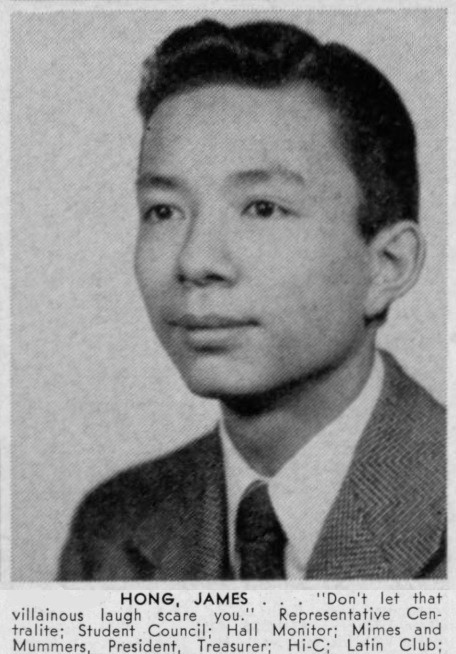
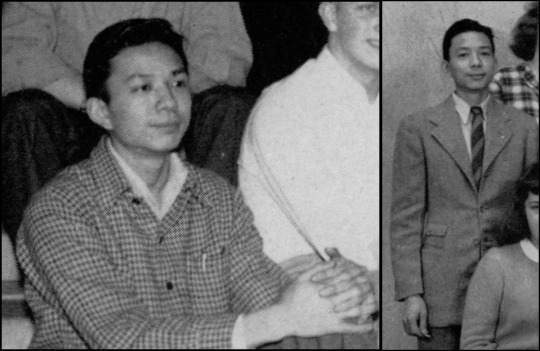


James Hong, The Main Man
Chances are, if you've watched movies in the last seven decades, you’ve seen or heard Minneapolis native James Hong. With over 650 film and television credits, he is one of the most prolific actors of all time. His latest accomplishment is a Screen Actors Guild Award for Outstanding Performance by a Cast in a Motion Picture for the film Everything Everywhere All at Once, which was released on March 25, 2022. The film also garnered 7 Oscars from 11 nominations at this year’s Academy Awards, which Hong attended wearing a bowtie with googly eyes—a nod to the film. In 2022, at age 93, he became the oldest person to receive a star on the Hollywood Walk of Fame.
James Hong was born in Minneapolis to Chinese immigrants in February, 1929. His father, Frank W. Hong, managed the Golden Pheasant, one of the first Chinese restaurants in the city (it opened in 1919 next to the more famous Nankin, which opened the same year). The Hong family later owned a business in what some considered to be Minneapolis’s Chinatown. Sent away to Hong Kong for elementary school, James returned to Minneapolis for middle school, where he had to re-learn English. He attended the old Bryant Junior High and then Central High School, where he graduated in 1947.
Learn more about the Hong family and Minneapolis’s Chinatown in this MinnPost article from 2015.
If you enjoyed Everything Everywhere All at Once, or are waiting in the queue for the DVD, check out more books and films featuring the writers, actors, and directors of this Oscar-winning film.
Images of James Hong from the 1946 and 1947 Minneapolis Central High School yearbooks. See more yearbooks and restaurant menus in the Hennepin County Library Digital Collections.
#Minneapolis#Minnesota#famous people#actors#1940s#high school yearbooks#James Hong#award winners#Chinese Americans#Everything Everywhere All at Once
206 notes
·
View notes
Text

‘Faces of Sanxingdui’: Bronze Age Relics Shed Light on Mysterious Ancient Kingdom
A golden face with patinaed turquoise eyes stares out of the darkness. Illuminated around it stand three other bronze heads — some have flat tops, others round — all looked over by a giant bronze statue almost 9 feet high. All have the same piercing, angular eyes.
There’s something about the “Faces of Sanxingdui” — as this collection of sculptures is being billed — that feels both familiar and alien. Currently on display at the Hong Kong Palace Museum, they may appear Mayan or Aztec to the untrained eye, but these over-3,000-year-old sculptures weren’t unearthed anywhere near Mesoamerica’s ancient civilizations. They were discovered on China’s Chengdu Plain, at an archeological dig site called Sanxingdui (which translates as “three star mound”).
Thought to be the largest and oldest site left by the Shu kingdom, a civilization in southwestern China once only hinted at in myths and legends, Sanxingdui was not discovered until the 1920s, when a farmer stumbled across objects while digging an irrigation ditch. The site has since been found to contain the ruins of an ancient city made up of residences, sacrificial pits and tombs enclosed by high dirt walls. Archaeologists from the Sanxingdui Museum say the city was established some 4,800 to 2,800 years ago, until it was abandoned around 800 BC for unknown reasons.

The Chinese government has long promoted Sanxingdui as evidence of the country’s long, uninterrupted history — with the discoveries included in history textbooks for more than a decade. And while thousands of visitors have already flocked to the groundbreaking exhibition in Hong Kong, some analysts suggest that the items are also being used to support the Chinese government’s vision of national identity.
The mysterious and talented Shu
The Shu kingdom, which emerged in the Sichuan basin during the Bronze Age, is believed to have developed independently of the Yellow River Valley societies traditionally considered the cradle of Chinese civilization. Its inhabitants created exquisitely crafted bronze, jade, gold and ceramic objects, depicting fantastical beasts, kings, gods and shamans with bulging eyes and enlarged ears.
Around 120 of the items are currently on display in Hong Kong, and it’s the first time many of these objects, most of which were excavated between 2019 and 2022, have been showcased outside Sichuan province.

Remarkably, the sculptures predate the Terracotta Army, a collection of earthenware statues depicting the armies of China’s first emperor Qin Shi Huang, by at least 1,000 years. Wang Shengyu, an assistant curator at the Palace Museum said the objects are far more advanced, imaginative, and artistic than those being produced anywhere else in China at that time.
“You can tell that it’s very sculptural and very artsy,” Wang said at the exhibition opening, pointing to a roughly 1-foot-tall bronze figure whose fantastical, braided hair extends out to three times the height of its body and, had it not been broken, would stretch much further. “You can imagine how magnificent it was. From above his nose and all the way up, it would’ve been over 1.5 meters (4.9 feet) tall, according to the fragments (archeologists) found. The end of the pigtail is on his shoulder.”
Little is known about the Shu kingdom other than what’s been discovered on the 3.6-square-kilometer (1.4-square-mile) site outside Chengdu. There is no evidence of a written Shu language, and historical literature contains scant information about its culture other than a handful of myths and legends, including a reference to a Shu king called Can Cong whose eyes were said to have protruded — perhaps explaining why so many of the 13,000 relics recovered from the site feature bulging eyes.

After the Shu state was conquered by the Qin dynasty in 316 BC, Shu culture was “buried” under the “mainstream” culture that later emerged on China’s central plain, Chinese authorities wrote in a 2013 UNESCO submission seeking to have Sanxingdui and two nearby archeological sites recognized as World Heritage Sites. They are currently on UNESCO’s “tentative list.”
Since 1986, eight excavated pits at Sanxingdui have yielded giant masks of gods with bulbous, insect-like eyes and protruding ears, mythical creatures with gaping mouths and an almost 4-meter-tall (13-foot) bronze “tree of life” sculpture decorated with ornaments like a Christmas tree. All the items were found shattered, burned and buried, leading experts to believe the pits were used for ritual sacrifices. Some have now been painstakingly re-constructed by archaeologists. “It took 10 years to reconstruct the tree,” said Wang Shengyu, an assistant curator at the museum who helped curate the exhibition.
That tree is not on show in Hong Kong, as it is considered too precious to send abroad, but a section of one of six others discovered and ornaments are on display at the museum, as well as a 3D holographic projection of what experts think it would have looked like – its layers and branches adorned with birds, flowers, fruit, dragons, bells as well as jade and gold foil ornaments. The set are thought to have been part of a theater space.
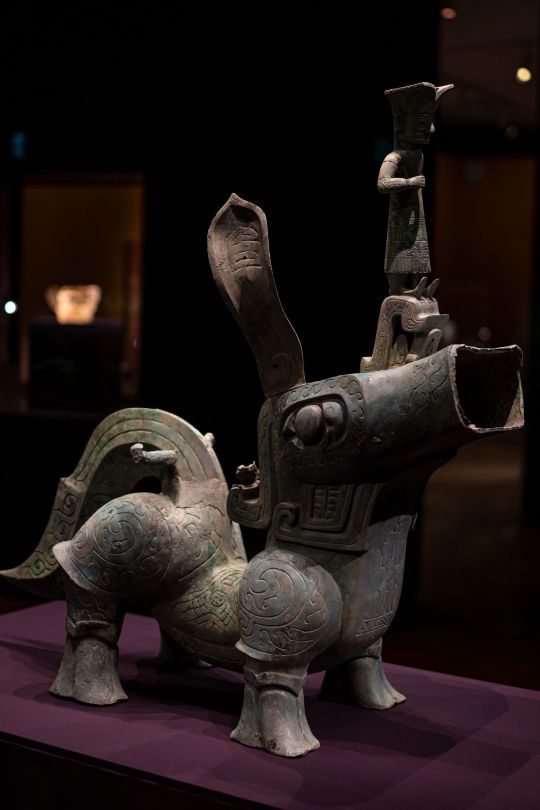
‘Historical myth’ of a continuous civilization
The exhibition places these items in the context of other ancient civilizations and includes the Shu among the many societies to have existed in the country’s “5,000-year history.” According to a press release from organizers, museum and Hong Kong government officials at the opening stressed the “continuity, inventiveness, unity, inclusiveness and emphasis on peace and harmony” of Chinese history.
Henry Tang, chairman of the governing body behind the West Kowloon Cultural District (where the Palace Museum is located) and a former candidate for Hong Kong’s top leadership role, said in a statement that the district and museum are looking to “promote cultural and artistic exchanges between China and the world, ‘tell China’s story well’, and strengthen the public’s cultural self-confidence.”
But the narrative that the Shu kingdom was innately Chinese is contentious, according to Ian Johnson, a senior fellow for China Studies at US think tank, the Council on Foreign Relations.
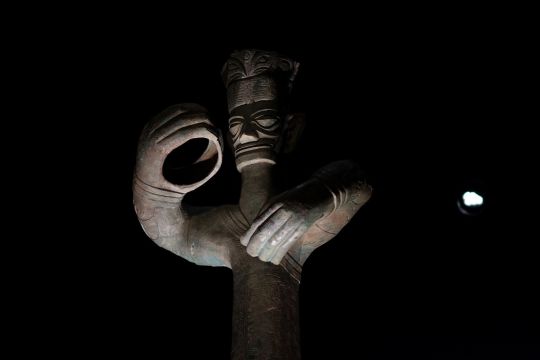
“Over the past few decades, the (Chinese Communist Party) has been trying to push a historical myth that all the peoples who have ever lived inside the current borders of the People’s Republic are ‘Chinese,’” he said over email.
“The basic idea is that the PRC (People’s Republic of China) encompasses people who naturally belong together and therefore, from today’s standpoint, form a nation. Hence any effort to have autonomy or even independence is taboo — it runs against history.”
The People’s Republic of China was established in 1949, and its government has often used China’s continuous history as evidence that ethnic groups such as the Tibetans and the Uyghurs have always belonged to China.

Johnson said that there was little support for the idea that civilizations along the Yellow River had much in common with those in the Sichuan Basin.
“They have commonalities but are not the same — just as ancient Assyrians and Phoenicians and Greeks weren’t the same, even if they shared certain things in common,” he said, adding: “sponsoring these kinds of exhibitions are popular and win the government credit.”
When asked to comment, the Hong Kong Palace Museum said the exhibition was “curated based on academic and archaeological research” and that it reinforces its mission to deepen audiences’ “understanding of the lives and cultures of various regions and ethnic groups as well as exchanges among them in ancient China, which have contributed to the magnificence of China’s civilization and its ‘diversity in unity’ pattern of development.”
By Christy Choi.
#‘Faces of Sanxingdui’: Bronze Age Relics Shed Light on Mysterious Ancient Kingdom#Chengdu Plain#Sanxingdui#Shu kingdom#gold artifacts#bronze artifacts#ancient artifacts#archeology#archeolgst#history#history news#ancient history#ancient culture#ancient civilizations#ancient china#ancient chinese#chinese history#chinese art#long post#long reads
32 notes
·
View notes
Text
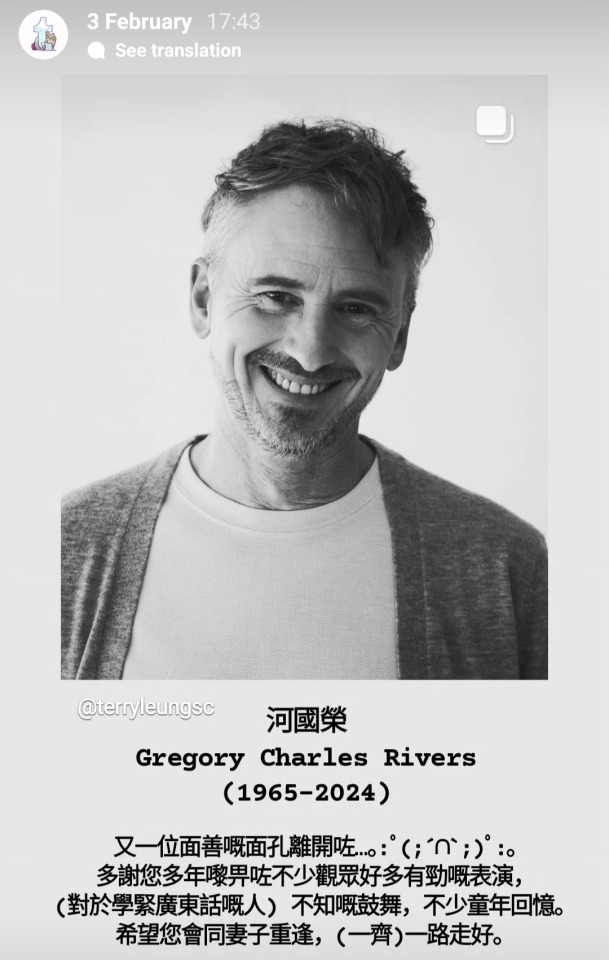
河國榮 Gregory Charles Rivers
(30 April 1965 — 2 February 2024)
Posted this on my Insta Stories a couple days back but decided I'd do a post here too because I realised I'm still feeling saddened by Mr Rivers's passing.
For people of certain older generations, especially those who grew up in the 1990s watching Hong Kong TVB series, Mr Rivers, aka 河國榮 (Ho Kwok-Wing) to HK TV viewers, was an easily recognisable and familiar face, having been (at that time) the only foreign/Caucasian face to appear consistently in HK television armed with an impressive fluency in Cantonese.
I guess his passing has affected me more than I thought it would because firstly, I'd admired him for his proficiency in Cantonese and subconsciously looked to him as an inspiration.
As someone who grew up being terrible at Chinese (both Cantonese and Mandarin) and got teased for being “the banana” (i.e. yellow on the outside but white on the inside), the constant presence of this Caucasian guy on TV who could speak better Cantonese than I, partly spurred me on to learn Cantonese better myself.
Secondly, he represented an age when HK and by proxy, Cantonese, was flourishing; Mr Rivers's story of coming to Hong Kong purely motivated by his love for Cantopop and the Cantonese language is (sadly) not the kind of story one will hear very often again…
With his passing, it's like yet another bit of the shine of “Golden Age” HK being taken away…and this “Golden Age” was part of my childhood, so it means another part of my childhood is gone…
Anyway, I'll end this post with this video of an interview Mr Rivers did (c. 2007), sharing briefly his thoughts on his experiences as a foreign actor in HK.
河生,對於學緊廣東話嘅我嚟講,
您畀咗我唔少不知嘅鼓舞。
呢一點,我會喺心裏永遠默默感激。
希望您而家搵到了安寧,同妻子一路走好!
17 notes
·
View notes
Text
I stumbled across somebody being disparaging about Hetalia (whoa blast from the past), which made me sad, because it undervalues what I remember of the fandom back in the day.
I haven't seen another fandom use the source material as a springboard quite so much since. Granted, I wasn't across all facets of it at the tender age of 14, so I'm probably just watching the metaphorical iceberg float by, but from what I remember, a lot of the fandom at the time looked at the source material, smiled and nodded and went "Hmm, yeah, but also, no, there's a better way of portraying this", and invested so much care, time, attention, and devoted interest in going off on their own and using their own fanfics/fanart/OCs/etc to explore so many fascinating aspects of history. Pre-Bronze Age China! Golden Horde Mongolia! Filipina rights in the 50s! 7th-11th century Russia! Celtic/Roman Gaul! World War Japan! Taiwan and Hong Kong! Civil War USA! The Metis in Canada! The Treaty of Waitangi!
Honestly, the most I remember of Hetalia from like 2011-2014 was the sheer unadulterated CREATION. It seemed like everybody was merrily making their own OCs, developing a deep passion and enthusiasm for history and obscure bits of trivia, and spreading knowledge around. I remember coming across the most gorgeously drawn Hetalia AMV about the fall of the Austro-Hungarian Empire, for pete's sake, and thinking "whoa, this series looks so cool, I've got to check it out" - only to check out the actual series and go "??? Huh? Where's the drama? Where's the panache? Where's my amazing portraits of nations in a quasi-Neoclassical art style? Where's the epicness?" (and that's how you can tell it was 2012)
And now ... I've completely lost my train of thought. Something something fan creatives going above and beyond? Something about how certain stories/media are creatively inspiring? I think? Anyway.
#rambling#don't mind me#fandom#hetalia#creatives#hetalia aph#GOD I miss that time period#everybody was so creative and it was SO GOOD#creative
3 notes
·
View notes
Text



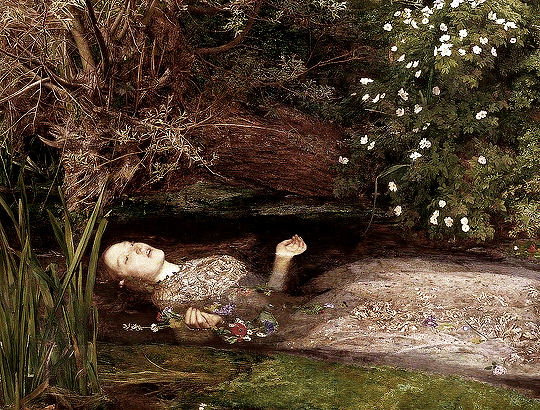












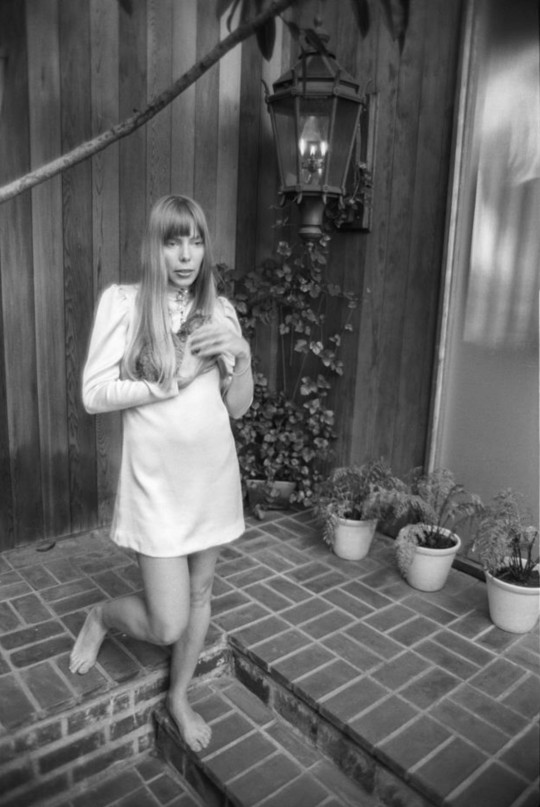


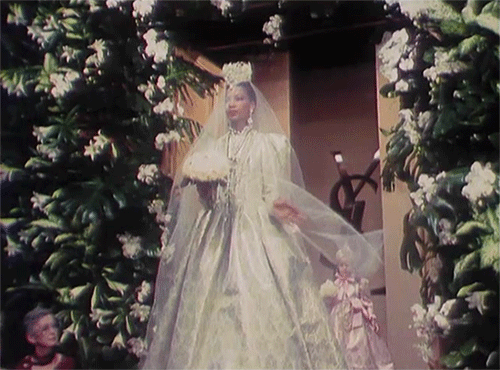




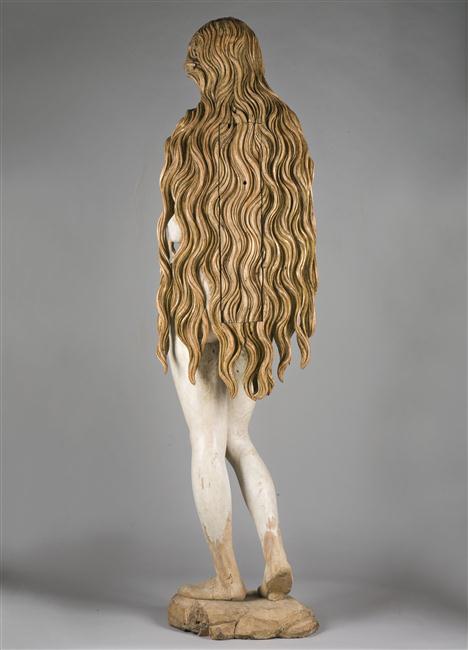


guinnevere by csn / Elizabeth: The Golden Age (2007) / Jean-François Jalabert, Galatée (detail) / BEAUTY by Rino Stefano Tagliafierro, Ophelia (1851-52), John Everett Millais / a song for jenny by humble pie / Joni Mitchell Led Zeppelin's California / Laetitia Casta wearing the iconic wedding dress made of roses during the Yves Saint Laurent fashion show, 1999 / L’Epistre d’Othea, 15th century (tree person painting) / going to california by led zeppelin / the rain, the park and other things by the cowsills / 'For the Roses' felt pen artwork of Judy Collins in the dressing room by Joni Mitchell / Judy Collins © artpepper.net / going to california by led zeppelin / Vogue Hong Kong 'Armour of Corture', March 2022 Model: Lauren Ernwein Photographer: Szilveszter Mako / Joni Mitchell, November 1970 © Joel Bernstein / Joni Mitchell, 1968 © Tom O'Neal / "East of the Sun and West of the Moon", by Kay Nielsen, 1914 / lady jane by the rolling stones / Mounia closing Yves Saint Laurent’s Spring/Summer 1982 Haute Couture show / Vogue Hong Kong 'Armor of Corture' March 2022 / Yves Saint Laurent on Dim Dam Dom (1968) / english rose by the jam / Yves Saint Laurent, Wedding Bikini, 1968 / Mary Magdalene, polychrome wood sculpture, Augsburg 1515-1520 musee du louvre / Lord of The Rings / Clive Arrowsmith Dress by Frank Usher (Queen 1970)
#yves saint laurent#joni mitchell#judy collins#csn#humble pie#led zeppelin#the cowsills#the rolling stones#the jam#this came out of nowhere !! sorry for the long post
43 notes
·
View notes
Text
Translation of Anthony Wong's 1994 我们不是天使 (We Are Not Angels)
Anthony Wong-Ming was one half of Tat Ming Pair, the experimental duo that made some of Hong Kong's most well-known queer anthems during the Golden Age. He sang in both Cantonese and Mandarin, but began releasing more Mandarin music in the late 1990's, after Tat Ming Pair's (amicable) split.
我们不是天使 is my first Mandarin-English translation. When I first heard the song, I was struck by the bitterness in Wong's voice. Mandarin is the language of mainland China, as well as the language of the CCP rhetoric that Wong mentions (and mocks). In 我们不是天使, Mandarin is made--quite literally--into the embodiment of Wong's many political and personal turmoils.
It's also worth noting that Wong grew up Christian, but walked away from his church upon realizing its attitude towards homosexuality. His music is rife with religious motifs: Angels, Heaven, and eternity positioned next to political oppression, which is then positioned next to the viscerality of queer love and longing. I love this song to pieces, and it's actually been the soundtrack to some of my own writing.
Translation:
生命该尊敬自强
They tell us to live a life of respect and self-improvement (1)
爱情该地老天荒
They tell us that proper love should outlast the heavens and earth (2)
他们都不可能说谎
And they wouldn't lie, right?
要是我爱得疯狂
If my love is half-crazed and reckless
要是我不懂隐藏
If I don't know to hide it
是否我还没有成长
Does this mean I am still a child? Have not yet grown into myself?
如果真爱不一定光明
Well, if my love cannot bring light (3)
就让黑暗将天地埋葬
Then I would let darkness bring ruin to the heavens and earth
不希望天天向上
i've never harbored hopes of rising above this (4)
只知道生命无常
After all, I know my life isn't long,
这是我孤独的信仰
And that's religion enough for this lonely man.
是人间没有天堂
Is there truly no heaven between our bodies?
还是我没有翅膀
Or was I born without the wings
飞不出欲望的围墙
To flee from my desire?
总是堕落在谁的胸膛
I've only/always known the depravity of crashing into another's arms
总是让这个世界失望
The world has only/always been ashamed of me
我们不是天使
We are no angels
我们只是孩子
We are just children
寻找可以安躺的海港
Looking for safe harbors
不管天地苍茫
I don't care how vast the heavens and earth are
不怕迷失方向
I'm not scared of losing my way
总有互相拥抱的臂膀
We only/always have each other's arms to fall into
我们不是天使
We are no angels
我们终将飞逝
And in the end, we'll lose ourselves
沦落在五光十色里流浪
But maybe we can lose ourselves in a million colors (5)
难道他们想像的天堂
Tell me, is their heaven
是一个没有欲望的地方
A land without desire?
不希望天天向上
i've never harbored hopes of rising above this
只知道生命无常
After all, I know my life isn't long,
这是我孤独的信仰
And that's religion enough for this lonely man.
是人间没有天堂
Is there truly no heaven between our bodies?
还是我没有翅膀
Or was I born without the wings
飞不出欲望的围墙
To flee from my desire?
总是堕落在谁的胸膛
I've only/always known the depravity of crashing into another's arms
总是让这个世界失望
The world has only/always been ashamed of me
我们不是天使
We are no angels
我们只是孩子
We are just children
寻找可以安躺的海港
Looking for safe harbors
不管天地苍茫
I don't care how vast the heavens and earth are
不怕迷失方向
I'm not scared of losing my way
总有互相拥抱的臂膀
We only/always have each other's arms to fall into
我们不是天使
We are no angels
我们终将飞逝
And in the end, we'll lose ourselves
沦落在五光十色里流浪
But maybe we can lose ourselves in a million colors
难道他们想像的天堂
Tell me, is their heaven
是一个没有欲望的地方
A land without desire?
难道我们垮掉的翅膀
No wonder our broken wings
早已被这个世界遗忘
Have been forgotten by this world
Translation Notes:
(1) 尊敬自强 (cultivating the the spirit of self-improvement and shaping moral character) is a phrase lifted from the CCP's patriotic education campaign, and refers to a moral uprightness that is nationalistic by nature.
(2) A more accurate translation would be, "outlast the end of the earth and the ruin of the heavens." I thought this was a bit clunky, though, and "heavens and earth" fit more nicely with all the other lines that refer to something vast.
(3) A more accurate translation would be, "if my love is not bright," but I thought the action implied in "bringing light" stood in clearer contrast to the line about "ruining the heavens and earth" with darkness.
(4) 天天向上 (ascend every day) is another phrase lifted from the CCP, and also refers to cultivating your moral uprightness/spirit. Ironic, because it refers to ascension (to Heaven) in a very literal way.
(5) A more accurate translation would be, "five brilliances and ten colors," but I thought that was too clunky. I could be missing out on some nuance, though--let me know if I am. :)
Fun fact: Anthony Wong co-founded the Big Love Alliance and Renaissance Foundation, two LGBTQ+ rights organizations. Go check them out if you want to support his non-profit work!
12 notes
·
View notes
Note
List of 5 -10 Chinese films to watch, across all genres? Just curious what you would recommend.
golden age: the goddess (1934), the big road (1935)
third generation: two stage sisters (1964)
1970s wuxia: a touch of zen (1971), last hurrah for chivalry (1979)
heroic bloodshed: a better tomorrow (1986)
1990s mo lei tau: justice, my foot! (1992)
fifth generation: farewell my concubine (1993), the story of qiu ju (1992), hero (2002)
wong kar-wai: happy together (1997)
first taiwanese new wave: the puppetmaster (1993), yi yi (2000)
second taiwanese new wave: what time is it there? (2001)
hong kong handover film: spl: kill zone (2005)
sixth generation: a touch of sin (2013), long day’s journey into night (2018)
(ofc this is not a comprehensive list of the movements and genres within mainland chinese, hong kong, and taiwanese film, but they are some of my favorite styles)
48 notes
·
View notes
Text
1970s Cinema
The 1970s were a dynamic and transformative decade for cinema, with filmmakers pushing boundaries, exploring new themes, and producing influential films.
New Hollywood: The 1970s witnessed the continuation of the New Hollywood era, characterized by bold and innovative filmmaking. Directors like Martin Scorsese, Francis Ford Coppola, Steven Spielberg, and George Lucas emerged during this time, bringing a fresh and personal approach to their films.
American New Wave: The 1970s saw the rise of the American New Wave, also known as the "Movie Brats" era. Filmmakers like Scorsese, Coppola, and Robert Altman created gritty, character-driven films that tackled social issues and pushed the boundaries of storytelling. Notable films include "Taxi Driver" (1976), "The Godfather" (1972), "Jaws" (1975), and "Star Wars" (1977).
Blaxploitation: Blaxploitation films, primarily featuring African-American casts and urban themes, gained popularity in the 1970s. Films like "Shaft" (1971), "Super Fly" (1972), and "Foxy Brown" (1974) celebrated black culture and addressed social and political issues.
Disaster Films: The 1970s saw a surge in disaster films, often featuring star-studded ensemble casts and high-stakes scenarios. Movies like "The Towering Inferno" (1974), "Earthquake" (1974), and "Airport" (1970) captivated audiences with their suspenseful and action-packed narratives.
Horror Films: The 1970s is often referred to as the "Golden Age of Horror." Filmmakers like Wes Craven, John Carpenter, and Tobe Hooper revolutionized the genre with films like "The Texas Chainsaw Massacre" (1974), "Halloween" (1978), and "The Exorcist" (1973), which became instant classics.
Asian Cinema: The 1970s witnessed a surge in popularity for Asian cinema, particularly in martial arts films from Hong Kong. Legendary martial arts actors like Bruce Lee gained international recognition with films such as "Enter the Dragon" (1973) and "The Way of the Dragon" (1972).
European Art House Cinema: European art house cinema continued to flourish in the 1970s. Directors like Federico Fellini, Ingmar Bergman, and Werner Herzog produced influential films like "Amarcord" (1973), "Cries and Whispers" (1972), and "Aguirre, the Wrath of God" (1972).
Social and Political Films: The 1970s were marked by an increased focus on social and political issues. Films like "All the President's Men" (1976), "Dog Day Afternoon" (1975), and "One Flew Over the Cuckoo's Nest" (1975) reflected the era's cultural and political climate.
11 notes
·
View notes
Text



[ michelle yeoh, 60, cis woman, she/her ] and now walking on the red carpet is VIVIENNE LIN HAYES, we’re honored to be in the presents of a world class ACTRESS. they say that they’re the embodiment of HEART OF GLASS by BLONDIE, we can’t argue with that one ! rumor has it that they’re RESERVED and PASSIONATE. we often hear fans online compare them to A SET OF ACADEMY AWARDS PERCHED UPON THE MANTELPIECE, FINE WINE, A SOFT YET COMMANDING VOICE. we heard that there’s this one thing they don’t wish anybody to know; DESPITE PORTRAYING THE IMAGE OF A PICTURE PERFECT MARRIAGE, SHE HAS BEEN SEPARATED FROM HER HUSBAND FOR YEARS, let’s hope it’s not true !

name: vivienne lin hayes.
d.o.b. & age: november 13th, 1963; sixty years old.
birthplace: hong kong.
current location: london.
zodiac: scorpio sun, leo moon, aquarius rising.
sexual orientation: bisexual.
relationship status: married to kale hayes; secretly separated.
career claim: nicole kidman.
awards: academy awards ( 2 ), golden globes ( 3 ), emmys ( 2 ), tony awards ( 1 )
born and raised in hong kong, vivienne comes from a wealthy, influential family. her father was the ceo of a media company and her mother was a famous actress. she's the second born of four children and the eldest daughter. she always mothered and doted on her younger siblings growing up, and to this day, she still does.
growing up, she always had a passion for performing and at a young age, her parents enrolled her in acting and dancing lessons. it didn't take long for her to decide that acting was her calling.
it wasn't until the age of sixteen that her parents allowed her to begin to pursue acting professionally as they wanted to make sure she had a good education before doing so.
at the age of eighteen, she moved to london to study at tba. she was known as one of the most promising students during her time at the university, and is now considered one of the most successful alumnis.
by the time she was 21, vivienne finally caught her big break in hollywood and from that day forward, she worked her way up the hierarchy to where she is now; a two-time academy award winning actress and a household name.
she got married to a well-known film director, kale hayes, whom she is still married to. they are known as everybody’s favourite ‘loved up’ power couple, but what the public doesn’t know is that they’ve been separated for years and are both in secret relationships with other people.
of course, she loves kale dearly, he’s one of her best friends, but after a long time of marriage, they realised they weren’t meant to be but decided to keep up with their married image for publicity reasons.
6 notes
·
View notes
Text
Dick = Bill; eldest sons who are definitely Not Straight with long hair and hot gfs who are treated as the Golden Standard despite likely (in Bill’s case) and confirmed (in Dick’s) having a lot of issues with their parental figures and being rebellious and probably hotheads/angry. Also charmers.
Cass = Charlie; tad more asocial than their siblings, quieter, lives very far away (Romania and Hong Kong), fandom tends to make Charlie into the quieter yet compassionate brother like how Cass is quiet but a kind person; both of them have zero issue doing the most reckless and insane shit ever for funsies.
Jason = Percy; studious and bookish; ‘betrayed’ their families and sided with villains (in Jason’s case became a villain) before eventually being ‘redeemed’ and brought back, have different views and morals than their family and are treated as outsiders for it, ambitious in their goals.
Steph = Fred; hot tempered and angry, fights with parental figures a lot, the bolder of the two twins/bolder one between her and Tim, mischievous and jokey, can be a bit cruel without meaning to be, tends to be impulsive, uses humor as a coping mechanism; intelligent and resourceful.
Tim = George; fights with parental figures a lot, the less bold of the two twins/less bold one between him and Steph, can be cruel when angry and without meaning to be, draws into themselves in bad situations sometimes, intelligent and cunning, comes up with incredibly batshit ideas that somehow work, dropped out of school.
Duke = Ron; has no fear of god or death, reckless as all hell, very loyal to his friends, a leader in a union organizer kind of a way, second youngest with Their Own Thing from the rest of the family, swears a lot, usually analytical and intelligent (Duke is very analytical and tried taking on the Riddler at age 10; Ron is an excellent strategist), close to Charlie/Cass.
Damian = Ginny; youngest Trying Very Hard to prove themselves, is constantly ready to fight everyone including god, covers up their insecurities and fears with a snarky and rough persona, lowkey has mommy issues, a lot of anger in a very small package, kind of treated better than everyone else by their parent (Molly and Bruce).
#dc#harry potter#batfamily#batkids#the weasleys#batfam#dick grayson#jason todd#cassandra cain#tim drake#stephanie brown#duke thomas#damian wayne#bill weasley#charlie weasley#percy weasley#fred weasley#george weasley#ron weasley#ginny weasley#molly weasley#bruce wayne#batman#parallels
137 notes
·
View notes
Text
Batfamily Action Style: Girls with Guns
While the likes of Captain Marvel and Wonder Woman are great for female empowerment and the fun spectacle of Harley Quinn and Black Widow are fun I have found myself disappointed with how the action is lackluster compared to their male counterparts. Even the more street level heros like Colleen Wing and Elektra have rather average fight scenes even though they are part of the supporting cast of the best Martial Artists in the MCU. While their fights are good they can be better. With the Batfamily finally coming to live action what can be improved?
So what source of media can the female members of the Batfamily be inspired by?
An old genre from the golden age of Hong Kong Action Cinema is the key to really capture what they can do. The Girls with Guns subgenre. Yes Madam is a 1985 martial arts film starring Karate Champion Cynthia Rothrock and current mega star Michelle Yeoh. It is considered the first movie of this kind and kicked off this type of story. Female action stars kicking ass and taking names just as well as any of the well known male actors.
If you want to see what a Cassandra Cain/Stephanie Brown scene would look like in a fight watch this movie.
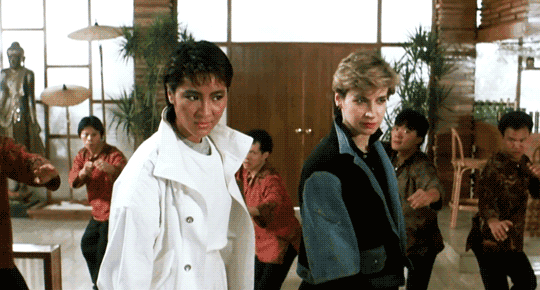
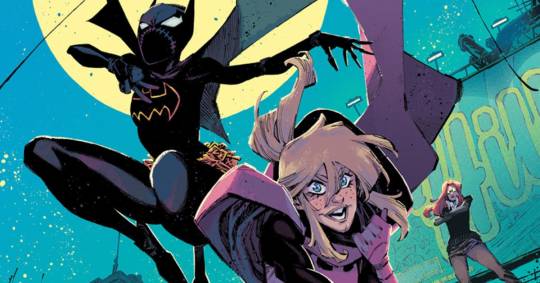
But these were not the only women defining this subgenre. Moon Lee, Cynthia Khan, Yukari Oshima and more were stars as well.

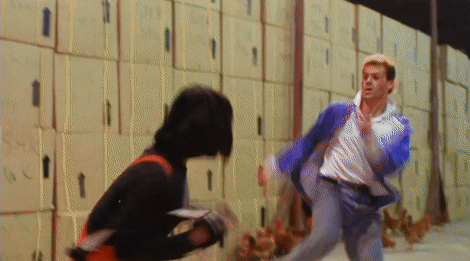
Sadly though by the 90s the subgenre died out along with the golden era of Hong Kong Cinema. A mixture of corruption due to the Triads being involved in the Hong Kong film industry, the rise of mainland Chinese movies, and the slow reunification of Hong Kong back into the Chinese government from British ownership were 3 major reasons this era died out. Combine this with the Hong Kong financial crisis due to the reunification, other competition from different Asian countries, and major American movies like Jurassic Park coming out led to the death Hong Kong 80s cinema. While luckily it recovered and made a resurgence through reimagining and artistic direction it was never the same again.
Essentially too many hands and factors controlling the industry.
The Girls with Guns subgenre sadly fell to obscurity in western audiences eyes. Never really making a splash in pop culture compared to other kung fu movies. However echos of their works can be felt since its fall in the mids 1990s. In Japan Anime was echoing the style of action. The best shows you may know is Black Lagoon and Ghost in the Shell .


While there is no correlation with the subgenre effecting other action movies in other Asia countries they have grown similar waves a female lead martial arts action. In 2008 ,Thailand had a short lived action star of Jeeja Yanin from her internationally acclaimed movie Chocolate. In 2013 in Indonesia the Raid 2 had amazing action scenes for their mute villian Hammer Girl played by Julie Estelle. Vietnam in 2019 gained similar fame for their movie Furie. It even got its own prequel directed by the first movie's main star Veronica Ngo. Finally in South Korea, while it was having its Renaissance in its film industry along came the film The Villianess. While more action oriented it was so good that John Wick 3 had to steal a scene from it.
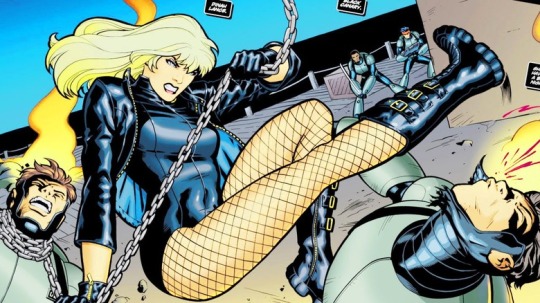

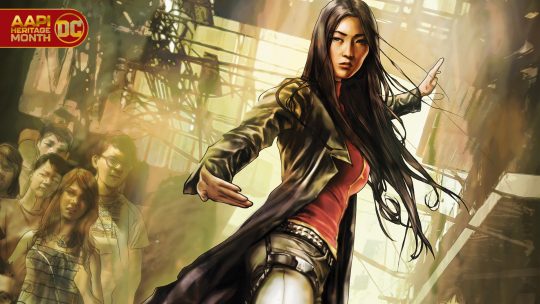

With characters like Cassandra Cain, Lady Shiva , Black Canary and more street level heros possibly making an appearence in live action, Hollywood might as well pull out all the stops for these badass women. If they do,they might want to look outward for inspiration.
#batman#batfamily#batfam#stephanie brown#batgirl#cassandra cain#lady shiva#barbara gordon#dinah lance#black canary#lady blackhawk#helena bertinelli#huntress#Batfamily Action
15 notes
·
View notes